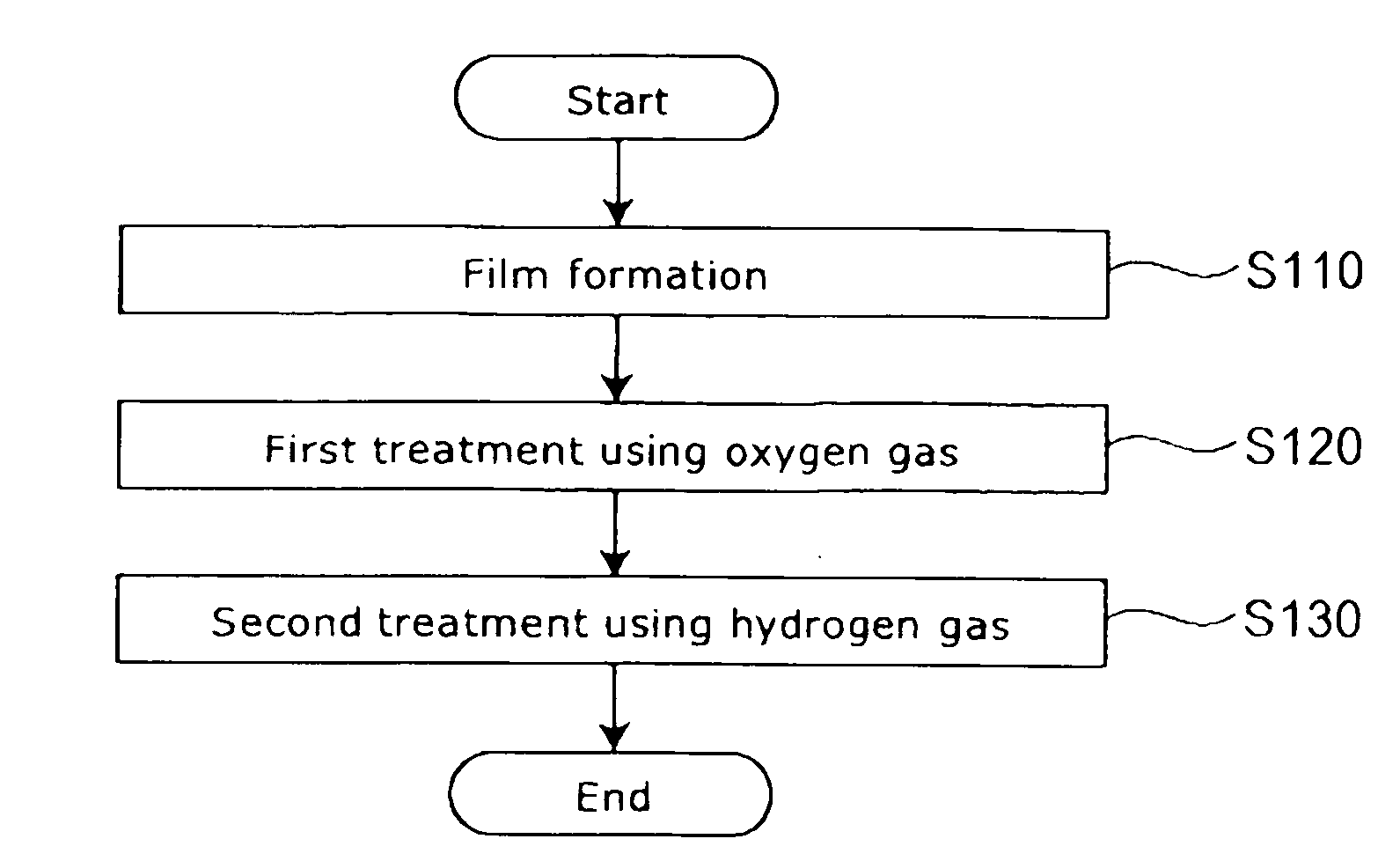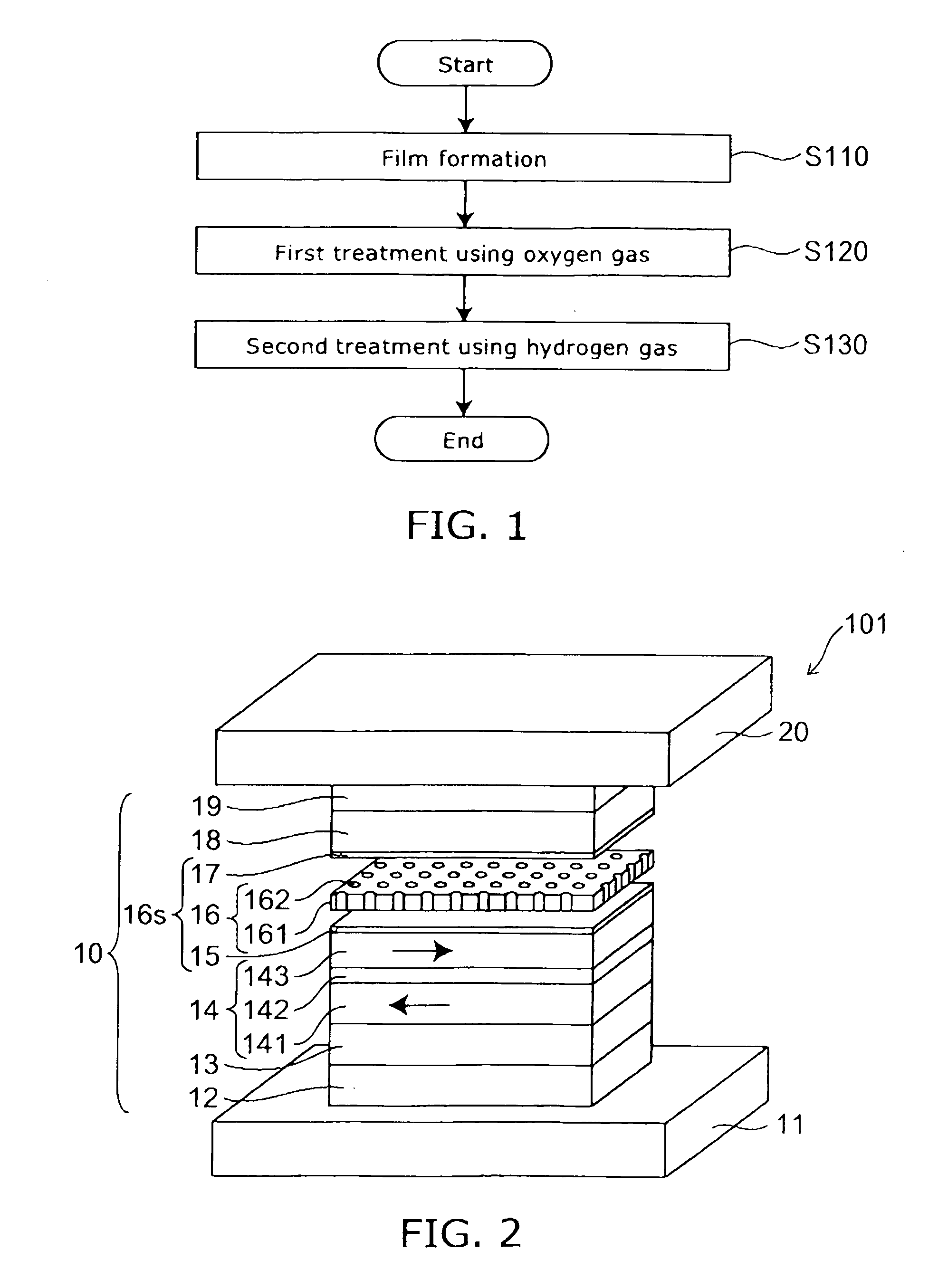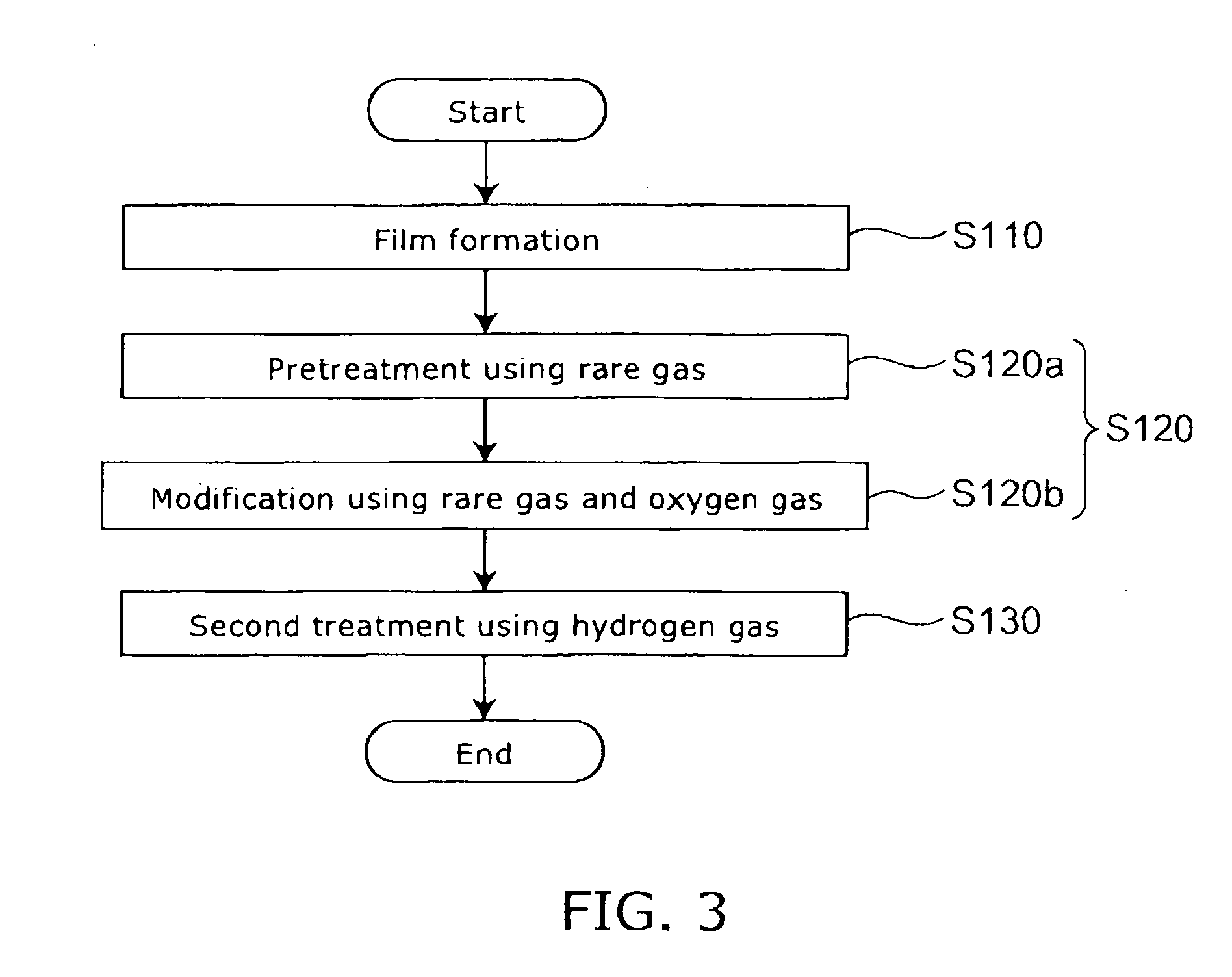Method for manufacturing a magneto-resistance effect element and magnetic recording and reproducing apparatus
a technology of magnetoresistance and effect elements, which is applied in the direction of magnetic materials for record carriers, magnetic bodies, instruments, etc., can solve the problems of reducing resistance, converting weak magnetic fields, and high resistance in tmr elements
- Summary
- Abstract
- Description
- Claims
- Application Information
AI Technical Summary
Benefits of technology
Problems solved by technology
Method used
Image
Examples
first embodiment
[0058]FIG. 1 is a flow chart illustrating a method for manufacturing a magneto-resistance effect element according to a first embodiment of this invention.
[0059]FIG. 2 is a schematic perspective view illustrating a configuration of a magneto-resistance effect element to which the method for manufacturing a magneto-resistance effect element according to a first embodiment of this invention is applied.
[0060]FIG. 3 is a flow chart illustrating a specific example of the method for manufacturing a magneto-resistance effect element according to a first embodiment of this invention.
[0061]FIGS. 4A to 4D are schematic sectional views following step sequence illustrating the method for manufacturing a magneto-resistance effect element according to a first embodiment of this invention.
[0062]That is, FIG. 4A represents the first step, and FIG. 4B represents the step following the step of FIG. 4A, and FIG. 4C represents the step following the step of FIG. 4B, and FIG. 4D represents the step foll...
first example
[0105]FIG. 6 is a graph illustrating a characteristic of the magneto-resistance effect element by the method for manufacturing a magneto-resistance effect element according to the first example of this invention.
[0106]That is, FIG. 6 illustrates the CuO amount and the MR variation ratio (MR) in the spacer layer 16 in the magneto-resistance effect element 101a produced by the manufacturing method of a first example according to this embodiment and those of the magneto-resistance effect element 109 of the first comparative example. The horizontal axis of this figure represents CuO amount and the vertical axis represents MR variation ratio (MR).
[0107]Here, for the CuO amount, the CuO count number in the spacer layer 16 is evaluated by a 3-dimension atom probe microscope, and standardized so that the CuO count number of the first comparative example is 1.
[0108]The structure and manufacturing condition of the magneto-resistance effect films 10 of the magneto-resistance effect element 101...
second embodiment
[0214]FIG. 10 is a flow chart illustrating a method for manufacturing a magneto-resistance effect element according to a second embodiment of this invention.
[0215]As shown in FIG. 10, in the method for manufacturing a magneto-resistance effect element according to a second embodiment of this invention, after the first step (Step S110), the second step (Step S120) and the third step (Step S130), which are explained with respect to FIG. 1, further a fourth step (Step S140) is carried out.
[0216]Also in this step, the second step (Step S120) may include the PIT step (Step S120a illustrated in FIG. 3) and the IAO step (Step S120b illustrated in FIG. 3).
[0217]In the fourth step, the film submitted to the second treatment is submitted to the third treatment of at least any one of irradiation of rare gas ion, irradiation of rare gas plasma, and heating.
[0218]As the third treatment, the insulating layer 161 and the conductive portion 162 are submitted to, for example, irradiation of Ar ion b...
PUM
| Property | Measurement | Unit |
|---|---|---|
| Time | aaaaa | aaaaa |
| Power | aaaaa | aaaaa |
| Power | aaaaa | aaaaa |
Abstract
Description
Claims
Application Information
 Login to View More
Login to View More - R&D
- Intellectual Property
- Life Sciences
- Materials
- Tech Scout
- Unparalleled Data Quality
- Higher Quality Content
- 60% Fewer Hallucinations
Browse by: Latest US Patents, China's latest patents, Technical Efficacy Thesaurus, Application Domain, Technology Topic, Popular Technical Reports.
© 2025 PatSnap. All rights reserved.Legal|Privacy policy|Modern Slavery Act Transparency Statement|Sitemap|About US| Contact US: help@patsnap.com



